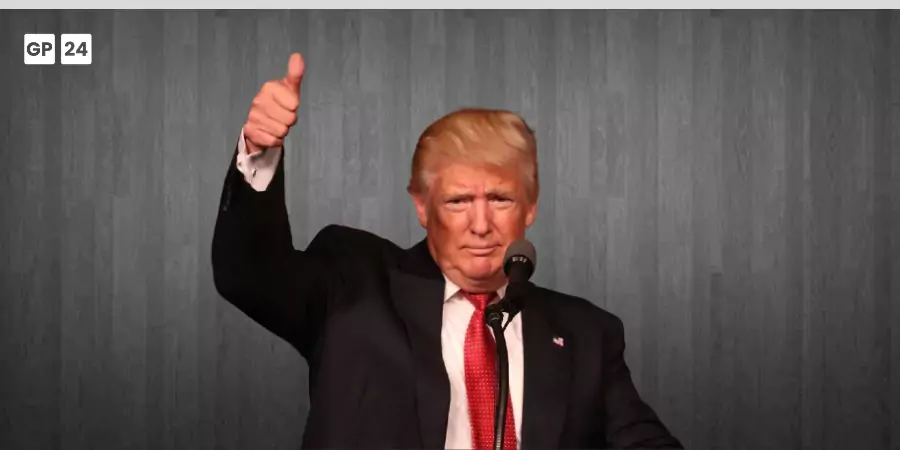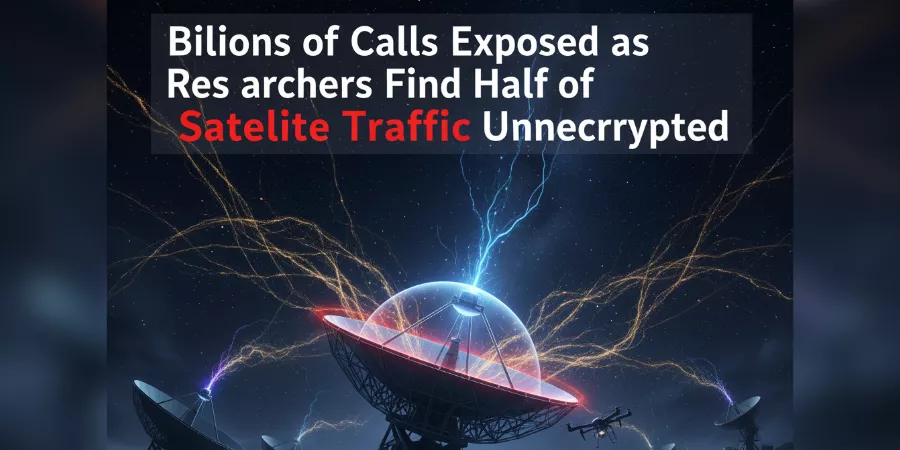The 2024 United States presidential election concluded with former President Donald Trump’s return to office, defeating Vice President Kamala Harris in a contest that reflected deep structural divisions within the American electorate. Trump’s victory, combined with Republican Senate control, establishes unified government conditions enabling significant policy implementation capacity a political configuration with substantial implications across domestic and international governance domains. Understanding this electoral outcome requires examining the campaign dynamics that produced it, the demographic and geographic coalitions supporting each candidate, the strategic decisions shaping competitive positioning, and the institutional consequences for American governance during Trump’s second presidential term. This analysis provides comprehensive examination of the 2024 election’s conduct, results, and implications for policy, political alignment, and democratic institutions.
Electoral Context: The Path to November 2024
The 2024 presidential election occurred within unusual political circumstances shaped by events throughout the preceding year.
The Biden Withdrawal and Democratic Nomination Process
President Joe Biden’s decision in July 2024 to withdraw from the presidential race after securing the Democratic nomination created unprecedented modern circumstances. Biden’s withdrawal followed challenging debate performances that intensified existing concerns among Democratic Party leaders, donors, and elected officials about his capacity to conduct an effective campaign and serve another four-year term.
This withdrawal occurring after the primary election process had concluded but before the Democratic National Convention presented the Democratic Party with complex procedural and strategic challenges. The party’s decision to rally behind Vice President Harris as the replacement nominee, while constitutionally and procedurally sound, necessarily compressed the general election campaign timeline significantly.
Historical Precedent Context:
Presidential incumbents rarely withdraw after securing their party’s nomination. The most comparable modern precedent occurred in 1968 when President Lyndon Johnson announced he would not seek reelection though Johnson’s announcement came before primary voting concluded, allowing a competitive process to select his replacement. Biden’s later withdrawal created different dynamics, with the party coalescing behind Harris through endorsement processes rather than voter selection.
Campaign Timeline and Resource Implications
Harris’s shortened general election campaign approximately four months versus the typical 18-24 month presidential campaign timeline created significant operational challenges:
Name Recognition and Introduction: Presidential campaigns typically dedicate extensive time to introducing candidates to voters, establishing biographical narratives, and building familiarity. Harris’s compressed timeline limited this foundational work despite her Vice Presidential profile.
Organizational Development: Building state-level campaign operations, volunteer networks, and voter contact infrastructure typically requires sustained effort over many months. Accelerated timelines constrained organizational capacity in competitive states.
Fundraising and Resource Allocation: While Harris inherited Biden’s campaign infrastructure and demonstrated strong initial fundraising, the shortened timeline complicated strategic resource allocation across multiple competitive states simultaneously.
Message Development and Testing: Campaigns normally test multiple messaging approaches, conduct extensive polling, and refine communications based on voter response. Compressed timelines reduced iteration opportunities, potentially limiting message optimization.
Electoral Coalition Analysis: Geographic and Demographic Patterns
Presidential elections reflect complex interactions between geographic distribution, demographic composition, and political alignment patterns that determine Electoral College outcomes regardless of national popular vote margins.
Geographic Electoral Dynamics
The American Electoral College system where presidents are elected through state-by-state contests rather than national popular vote creates intense focus on competitive “swing states” while rendering many states politically predetermined.
Swing State Characteristics in 2024:
| State Category | Examples | Electoral Significance |
|---|---|---|
| Rust Belt/Industrial | Pennsylvania, Michigan, Wisconsin | Working-class voters, manufacturing economy focus |
| Sun Belt Growth | Arizona, Nevada, Georgia | Demographic change, suburban growth |
| Southern Traditional | North Carolina | Mixed urban/rural dynamics |
| Emerging Competitive | Texas, Florida (large electoral prizes) | Long-term demographic trajectories |
Trump’s victory likely reflected success in enough swing states to secure Electoral College majorities, following the pattern where relatively small vote margins in key states produce decisive electoral outcomes despite potentially closer national vote totals.
Demographic Coalition Dynamics
Presidential candidates assemble coalitions across demographic groups with victory depending on maximizing support among favorable constituencies while limiting opponent margins among less favorable groups.
Republican Coalition Under Trump:
Trump’s electoral success has historically depended on strong performance among:
White Working-Class Voters: Particularly in Rust Belt states and rural areas, this demographic has shifted toward Republicans during the Trump era, responding to economic populism, trade policy emphasis, and cultural messaging.
Rural Voters: Geographic polarization has intensified, with rural areas increasingly Republican while urban cores remain strongly Democratic.
Non-College Educated Voters: Educational polarization represents among the strongest demographic divides in contemporary American politics, with non-college voters increasingly Republican.
Religious Conservatives: Evangelical Christians and traditionalist Catholics maintain strong Republican alignment, motivated by social policy positions and Supreme Court appointment priorities.
Business Community Segments: Despite corporate America’s increased social progressivism on some issues, segments of the business community support Republican economic policies.
Democratic Coalition Under Harris:
Democratic coalitions typically depend on:
Urban Voters: Cities consistently deliver strong Democratic margins, though turnout levels critically affect statewide outcomes.
College-Educated Voters: Educational attainment increasingly predicts Democratic support, particularly among college-educated suburban voters who have shifted away from Republicans during the Trump era.
Younger Voters: Generational cohorts entering the electorate tend toward Democratic alignment, though turnout among young voters often lags older demographics.
Racial and Ethnic Minorities: Black, Hispanic, Asian American, and other minority communities have historically supported Democrats, though Republican inroads among some groups particularly Hispanic voters have emerged recently.
Professional Class Voters: College-educated professionals in knowledge economy sectors tend toward Democratic alignment.
Demographic Shifts and Coalition Stability
Recent elections have demonstrated that historical demographic coalition patterns are not permanent. Trump’s campaigns have shown capacity to:
- Improve Republican performance among Hispanic voters, particularly Hispanic men, through economic messaging and cultural appeals
- Maintain or improve performance among working-class voters across racial lines
- Partially offset Republican losses among college-educated suburban voters through gains elsewhere
These shifts complicate both parties’ strategic calculations, as demographic change doesn’t automatically favor either party if coalitions continue evolving.
Campaign Strategy and Modern Political Communication
The 2024 campaign reflected contemporary political communication’s evolution, where traditional media increasingly shares influence with digital platforms, social media, and alternative information ecosystems.
Digital Campaign Strategy and Platform Utilization
Modern presidential campaigns operate across multiple communication channels simultaneously, each requiring distinct strategic approaches:
Traditional Media: Television advertising, particularly in swing states, consumes substantial campaign resources despite declining viewership. Press coverage, debates, and earned media continue influencing electoral outcomes.
Social Media Platforms: Facebook, X (formerly Twitter), Instagram, TikTok, and YouTube enable direct candidate-to-voter communication, bypassing traditional media gatekeepers while creating new challenges around misinformation and platform governance.
Alternative Media Ecosystem: Podcasts, streaming platforms, and partisan news outlets reach significant audiences, particularly among demographics less engaged with traditional media.
Grassroots Digital Organizing: Campaigns leverage digital tools for volunteer recruitment, voter contact, fundraising, and mobilization capabilities that have transformed campaign operations over recent cycles.
Influential Figure Engagement and Campaign Surrogates
High-profile supporters amplify campaign messages, provide financial resources, and engage constituencies beyond candidate reach. Elon Musk’s prominent Trump support in 2024 exemplified this dynamic through:
Platform Control: Musk’s ownership of X provided Trump campaign advantages through platform governance decisions, content moderation approaches, and algorithmic prioritization that critics argued favored conservative content.
Financial Contributions: Substantial direct financial support to Trump campaign efforts and aligned super PACs provided resource advantages in competitive advertising markets.
Credibility Transfer: Musk’s entrepreneur and innovator reputation potentially attracted voters particularly younger men and technology sector professionals who might otherwise be skeptical of traditional political figures.
Media Attention: Musk’s involvement generated extensive media coverage, effectively providing Trump campaign additional earned media value beyond paid advertising.
This surrogate engagement pattern raises questions about billionaire influence in democratic processes, platform neutrality when owners have explicit political preferences, and whether wealth concentration enables disproportionate political influence.
Policy Emphasis and Message Positioning
Campaign messaging reflects strategic decisions about which issues to emphasize, how to frame them, and which voter concerns to prioritize.
Trump Campaign Message Themes:
Economic Focus: Emphasis on inflation, cost of living, and economic conditions under Biden administration, positioning Trump as better economic manager based on pre-pandemic economic performance during his first term.
Immigration and Border Security: Continued emphasis on border security, illegal immigration reduction, and enforcement-focused approaches messaging resonating with voters prioritizing security and rule of law concerns.
Cultural Issues: Messaging on cultural and social issues designed to appeal to traditionalist voters and create wedge opportunities with Democratic positions.
Anti-Establishment Positioning: Maintaining outsider political identity despite previous presidential service, positioning against perceived government bureaucracy and media establishment.
Harris Campaign Message Themes:
Reproductive Rights: Emphasis on abortion access following Supreme Court’s Dobbs decision, aimed at mobilizing women voters, particularly suburban and independent women concerned about reproductive healthcare restrictions.
Democratic Norms: Focus on democratic institutions, rule of law, and concerns about Trump’s approach to presidential power and election administration.
Economic Opportunity: Progressive economic policies while defending Biden administration achievements, attempting to balance credit-claiming with acknowledgment of voter economic concerns.
Coalition Unity: Attempts to hold together diverse Democratic coalition spanning moderate suburban voters to progressive activists with potentially conflicting policy priorities.
Institutional Implications: Unified Government and Governance Capacity
Trump’s victory combined with Republican Senate control creates unified government configuration with significant implications for policy implementation, judicial appointments, and executive branch operations.
Unified Government and Legislative Productivity
When single parties control the presidency and both legislative chambers, policy enactment becomes substantially more feasible though internal party divisions can still constrain outcomes.
Historical Context on Unified Government:
| Period | Configuration | Major Legislative Achievements |
|---|---|---|
| 2017-2018 | Trump + Republican Congress | Tax Cuts and Jobs Act, attempted ACA repeal |
| 2009-2010 | Obama + Democratic Congress | Affordable Care Act, Dodd-Frank financial reform |
| 2003-2006 | Bush + Republican Congress | Medicare Part D, tax cuts |
| 1993-1994 | Clinton + Democratic Congress | Limited major legislation before Republican takeover |
Unified government enables major policy initiatives but doesn’t guarantee success. Internal party factions, Senate procedural rules (particularly filibuster requirements for most legislation), and policy complexity constrain even unified governments.
Judicial Appointments and Long-Term Institutional Impact
Presidential terms’ most enduring impacts often come through federal judicial appointments particularly Supreme Court justices serving lifetime appointments.
Trump’s first term featured three Supreme Court appointments, creating 6-3 conservative majority that has issued significant decisions on abortion rights, regulatory authority, affirmative action, and other major constitutional questions. Second-term opportunities for additional appointments would further cement conservative judicial influence for decades.
Lower Court Impact:
Beyond the Supreme Court, presidential appointment of hundreds of federal district and appeals court judges shapes legal landscape across all policy domains. These judges serve lifetime appointments, extending presidential influence long beyond their terms.
Executive Branch Appointments and Administrative Direction
Unified government substantially eases Cabinet and senior executive branch appointment confirmation, enabling presidents to install preferred personnel across government without prolonged confirmation battles.
Administrative State Implications:
Presidential control of executive branch agencies determines regulatory priorities, enforcement approaches, and policy implementation across:
- Environmental regulation and energy policy
- Financial sector oversight and consumer protection
- Healthcare administration and insurance regulation
- Immigration enforcement and border management
- Labor standards and workplace regulation
- Civil rights enforcement and equality initiatives
Different administrations utilize identical statutory authority to pursue dramatically different policy outcomes through administrative action often without requiring new legislation.
Policy Domain Implications
Trump’s second term, particularly with unified government support, enables significant policy changes across multiple domains.
Immigration Policy and Border Security
Immigration represents among Trump’s highest-priority issues, with second-term policies likely emphasizing:
Enforcement Enhancement: Increased immigration enforcement resources, expanded detention capacity, and more aggressive deportation operations targeting both unauthorized immigrants with criminal records and broader undocumented populations.
Border Security Infrastructure: Continued physical barrier construction, technology deployment, and personnel increases along the southern border.
Legal Immigration Restrictions: Potential reforms limiting family-based immigration, restructuring refugee admissions, and implementing more restrictive asylum policies.
Workplace Enforcement: Expanded employer verification requirements and penalties for hiring unauthorized workers.
State and Local Cooperation: Efforts to require state and local law enforcement cooperation with federal immigration authorities, potentially through funding conditions.
Economic and Tax Policy
Republican economic policy traditionally emphasizes:
Tax Policy: Potential extension or expansion of 2017 Tax Cuts and Jobs Act provisions, with emphasis on corporate taxation, individual income tax rates, and estate tax provisions.
Regulatory Reduction: Scaling back regulations across sectors, particularly environmental, financial, and labor regulations viewed as constraining business activity.
Trade Policy: Trump’s approach combines traditional Republican free-market principles with greater willingness to use tariffs, trade restrictions, and bilateral negotiations to pursue specific industry or national interests.
Energy Policy: Emphasis on fossil fuel production, reduced climate change mitigation efforts, and rollback of renewable energy incentives implemented under Biden administration.
Social Policy and Cultural Issues
Social policy areas where significant administration influence exists include:
Reproductive Rights: Federal agency policies on contraception access, abortion medication availability, and Title X family planning funding may shift substantially, though state-level policies vary widely following Dobbs decision.
Education Policy: Federal influence on school curricula, particularly regarding race, gender, and American history; Title IX interpretation affecting transgender student rights; and school choice initiatives.
Civil Rights Enforcement: Emphasis on colorblind policies versus affirmative action, religious liberty protections versus anti-discrimination enforcement, and free speech concerns in educational institutions.
Foreign Policy and International Relations
Presidential authority over foreign policy enables significant unilateral action:
Alliance Relationships: Trump’s approach to traditional alliances (NATO, Asian partnerships) emphasizes burden-sharing and transactional relationships versus collective security frameworks.
Trade Agreements: Bilateral negotiation emphasis versus multilateral frameworks, with greater willingness to use tariffs and trade restrictions as negotiating leverage.
International Institutions: Skepticism toward international organizations and agreements, with preference for preserving national sovereignty over multilateral cooperation.
Military Posture: Balance between avoiding new military entanglements and maintaining military strength and deterrence capabilities.
Democratic Institutions and Constitutional Considerations
Presidential elections carry implications beyond specific policies to fundamental questions about democratic institutions and constitutional governance.
Electoral System Debates
The 2024 election, like recent cycles, likely rekindled debates about:
Electoral College: Whether the system where presidents can win Electoral College while losing popular vote serves contemporary democracy well, or whether direct popular vote would better reflect democratic principles.
Primary System Reform: Whether the nomination process adequately serves democratic participation or requires reforms addressing timing, delegate allocation, or party establishment influence.
Campaign Finance: Whether current campaign finance regulations adequately prevent corruption or disproportionate influence, particularly given super PACs and independent expenditure groups.
Voting Access: Ongoing tensions between election security emphasis and voting access expansion, with partisan divisions over voter ID requirements, early voting, mail voting, and registration procedures.
Polarization and Democratic Stability
American political polarization has intensified over recent decades, creating governance challenges:
Legislative Gridlock: Partisan polarization makes bipartisan compromise increasingly difficult, constraining government’s capacity to address complex challenges requiring sustained policy attention.
Information Ecosystems: Partisan media environments and social media dynamics create separate information realities, making shared factual basis for political debate more elusive.
Democratic Norms: Questions about whether partisan polarization erodes informal democratic norms around peaceful transfer of power, electoral integrity acceptance, and institutional respect.
Political Violence: Concerns about political violence risks when partisan divisions intensify and when political leaders use inflammatory rhetoric.
Constitutional System Resilience
The American constitutional system includes numerous checks and balances designed to prevent power concentration and protect democratic institutions:
Separation of Powers: Presidential power remains constrained by congressional authority and judicial review, even under unified government.
Federalism: State governments maintain substantial policy autonomy, limiting federal government reach across many domains.
Civil Society: Independent media, civic organizations, and private sector institutions provide accountability mechanisms beyond formal government structures.
Electoral Accountability: Regular elections provide ultimate democratic check on governmental power, enabling voters to reject leaders or policies they oppose.
These institutional protections have demonstrated resilience through numerous challenges, though their adequacy faces ongoing testing.
Comparative Historical Context
Understanding 2024’s election requires historical perspective on presidential electoral patterns and governance dynamics.
Recent Electoral Patterns
| Election Year | Winner | Unified Government | Notable Characteristics |
|---|---|---|---|
| 2024 | Trump (R) | Republican | Trump return after single-term absence |
| 2020 | Biden (D) | Democratic | COVID-19 pandemic context, high turnout |
| 2016 | Trump (R) | Republican | Electoral College/popular vote split |
| 2012 | Obama (D) | Divided | Economic recovery context |
| 2008 | Obama (D) | Democratic | Financial crisis context, historic candidacy |
These patterns reveal volatility in contemporary American politics, with party control shifting regularly and rarely producing sustained governance configurations.
Presidential Term Patterns
Modern presidencies rarely achieve transformative policy change without either crisis conditions providing unusual political opportunities or sustained unified government enabling legislative productivity:
Transformative Presidencies: Roosevelt (Great Depression/WWII), Johnson (post-Kennedy assassination), Reagan (inflation crisis), Obama (financial crisis) each faced crisis contexts enabling major policy initiatives.
Constrained Presidencies: Most presidencies operate under divided government or face political constraints limiting transformative capacity, producing incremental change rather than wholesale policy transformation.
Trump’s second term enters without immediate crisis comparable to 2008 financial crisis or COVID-19 pandemic, though economic conditions, geopolitical challenges, or unexpected events could create opportunities or constraints affecting governance capacity.
Conclusion: Analyzing Electoral Outcomes and Governance Implications
The 2024 presidential election represents another chapter in American democracy’s ongoing evolution, reflecting deep structural divisions within the electorate while demonstrating constitutional system capacity to conduct peaceful transitions of power despite intense partisan disagreement.
Trump’s victory, achieved through electoral coalition building in key swing states and effective campaign strategy, provides governance capacity enhanced by unified government configuration. This political alignment enables significant policy implementation across immigration, economic regulation, social policy, and foreign relations though constitutional constraints, internal party divisions, and political opposition will continue shaping outcomes.
For analysts, several key observations emerge:
Electoral Volatility: American electoral patterns exhibit substantial volatility, with party control shifting regularly and coalitions evolving in ways complicating long-term prediction. Demographic change doesn’t deterministically favor either party if both adapt coalition strategies.
Campaign Strategy Evolution: Modern campaigns operate across increasingly complex communication ecosystems, where traditional media competes with digital platforms, social media, and alternative information sources. Success requires sophisticated multi-channel strategies.
Institutional Resilience: Despite intense partisan conflict and concerns about democratic norms, American constitutional institutions continue functioning, elections occur as scheduled, and power transfers occur though stress on these systems requires ongoing attention.
Policy Implementation Capacity: Unified government enables but doesn’t guarantee major policy change. Presidential ambitions face constraints from institutional checks, party factionalism, public opinion, and practical implementation challenges.
Long-Term Questions: The election raises enduring questions about electoral system design, democratic participation, polarization effects, information ecosystem health, and constitutional system adequacy for contemporary governance challenges.
Understanding these dynamics requires moving beyond immediate partisan reactions to examine structural forces shaping American politics, institutional mechanisms constraining and enabling governmental action, and long-term trends affecting democratic governance. The 2024 election’s ultimate historical significance will emerge not from immediate results but from how this administration navigates governance challenges, whether policy initiatives achieve intended effects, and how the political system responds to continuing stress on democratic institutions and norms.
















